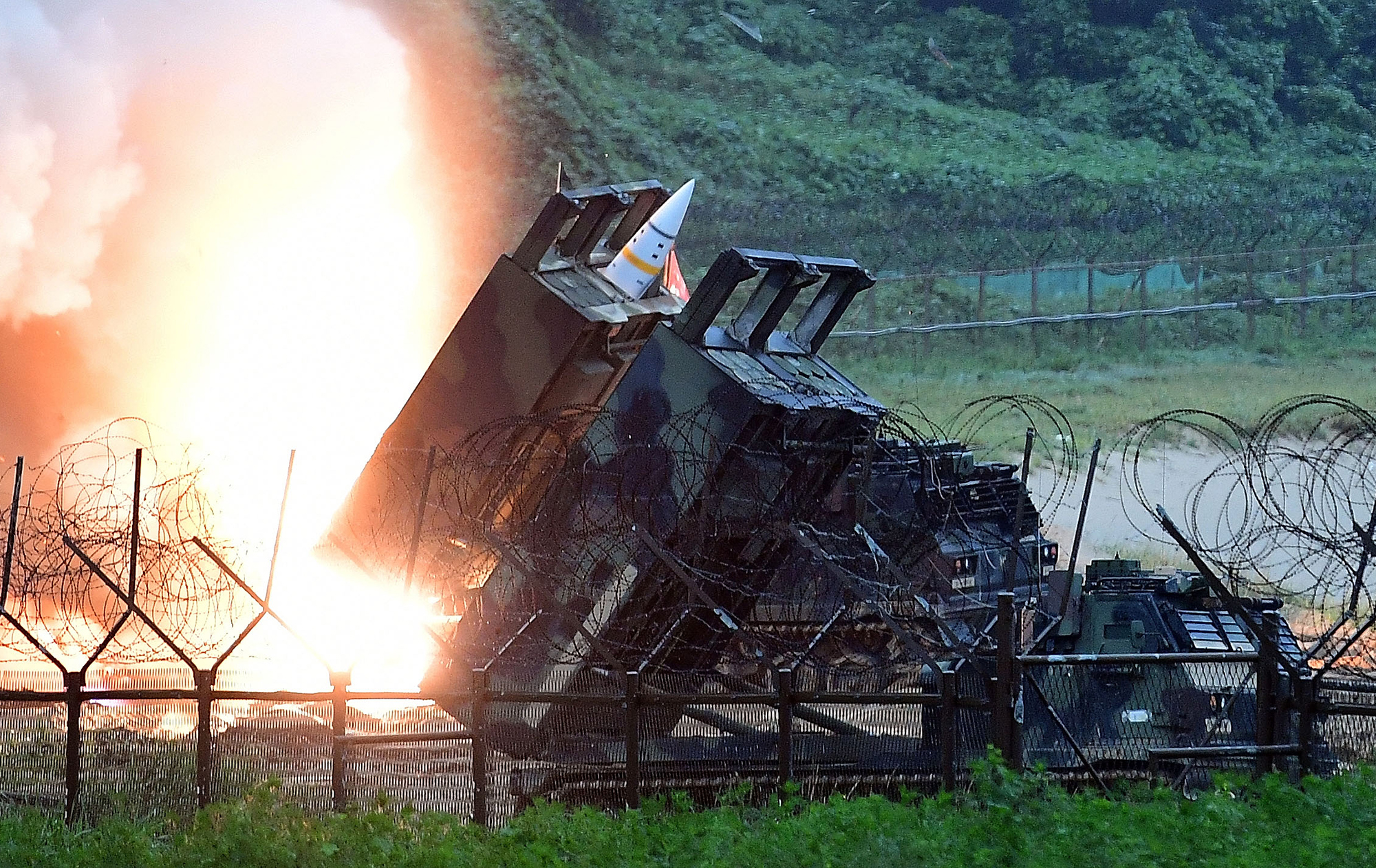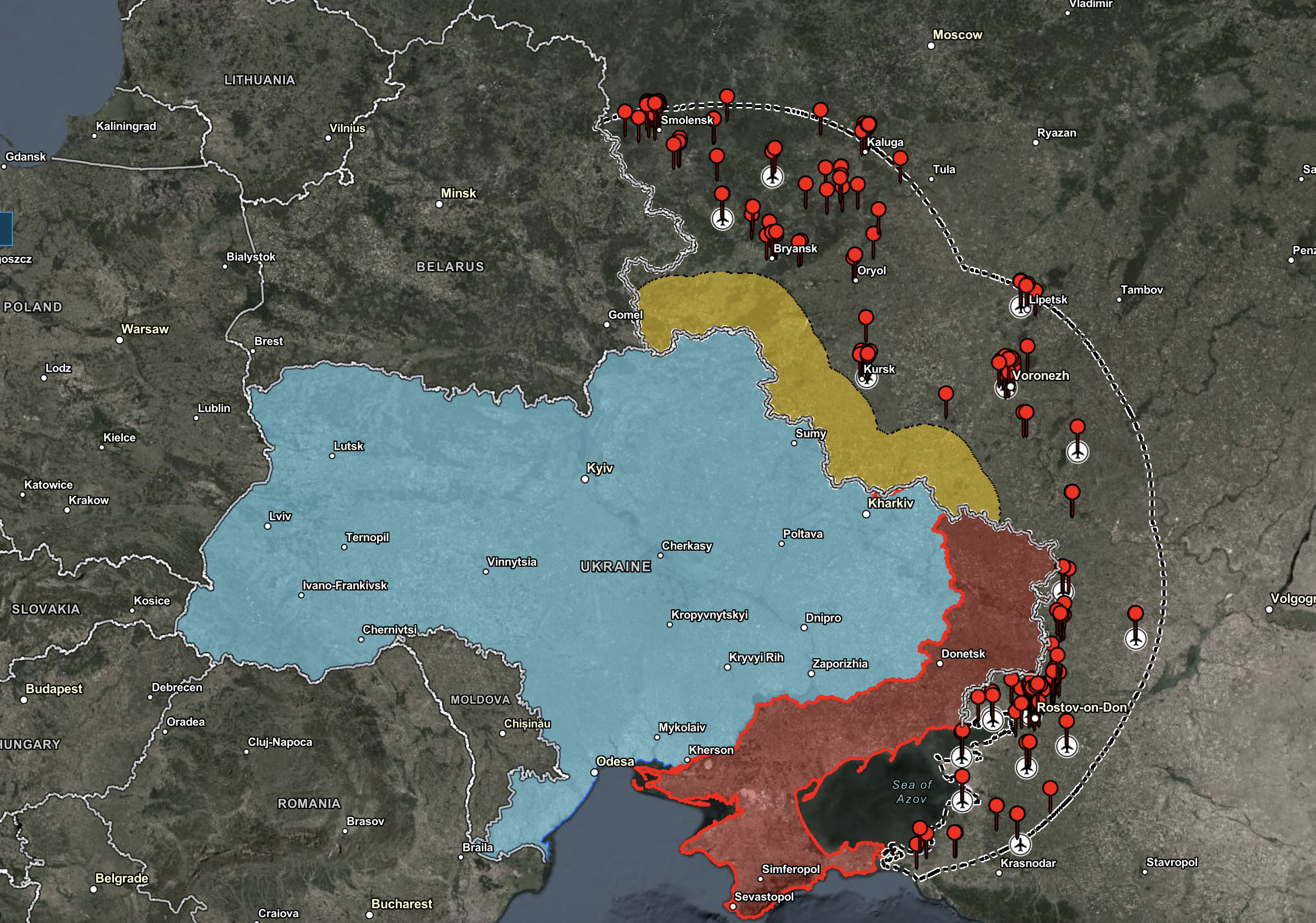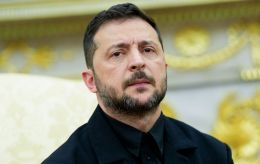Concerns and doubts of the West: Why Ukraine is restricted from long-range strikes into Russia
 The West does not have a consensus on allowing its missiles to hit Russia (Photo collage: RBC-Ukraine)
The West does not have a consensus on allowing its missiles to hit Russia (Photo collage: RBC-Ukraine)
Western countries still do not agree on the use of their long-range weapons against Russia. Even after the start of the Ukrainian Armed Forces' operation in the Kursk region, when the level of escalation became even higher, the war essentially moved to the aggressor's territory. What is holding back the allies and whether they will ease their prohibitions read in the RBC-Ukraine's article.
Contents
Answering journalists' questions on May 30, 2022, about whether the United States would provide Ukraine with long-range missiles, US President Joe Biden said that they would not send Ukraine missile systems that could be used to strike inside Russia.
When asked by a journalist on October 4, 2023, whether he had promised the Ukrainian president to deliver ATACMS missiles, Biden said that he had spoken with Zelenskyy and that they had fulfilled everything he asked for.
In an interview with The New York Times on September 25, 2022, Scholz explained that Germany was not sending its tanks to Ukraine because it was a very dangerous war. He stated that while they supported Ukraine, they were doing so in a way that would not escalate the situation into a war between Russia and NATO, as that would be a disaster.
On February 5, 2023, Scholz announced the delivery of German Leopard tanks to Ukraine and said that, together with their allies, they were providing Ukraine with tanks to help it defend itself. He stated that they had carefully weighed the decision on each delivery of weapons and coordinated it with their allies, especially the United States. Scholz emphasized that such a joint approach was a safeguard against the escalation of the war.
All these statements are separated by six months, a year, or a year and a half. In a war, such a period has its price and a different quantitative dimension. These statements show how Western leaders can change their position and how unchanged their rhetoric remains.
What is holding West back?
At the beginning of Russia's full-scale invasion, Ukraine asked its partners for effective Western artillery. It took months before the Ukrainian Armed Forces began receiving M777s, Caesars, Panzerhaubitze 2000s, and HIMARS MLRS. At the same time, Kyiv began calling on the Allies to provide non-Soviet tanks and air defense systems. A year later, IRIS-T, NASAMS, Patriot, Challenger, Abrams, and Leopard began to appear in Ukraine's arsenal. It took at least another year and a half before the West handed over the first F-16 fighters.
Many of the partners' hesitations concerned the transfer of missile weapons capable of firing over 80 kilometers. In the end, the UK and France sent their StormShadow / SCALP EGs with a range of 250 to 560 kilometers, and later the US sent ATACMS systems that can hit at a distance of 165 to 300 kilometers. The provision of these weapons was accompanied by a condition that Ukraine should not use them in the territory of Russia. For a long time, the Ukrainian Armed Forces adhered to this prohibition until the 'game conditions' changed. After the Russian offensive in the north of the Kharkiv region, Russia's near rear began to lie on Russian territory.
A month later, the United States allowed HIMARS systems with GMLRS missiles, but not ATACMS, to be used to strike the Russian regions bordering Kharkiv and Sumy. At the same time, there was information that the UK and France had allegedly also agreed to use their missiles, but this never happened.
Three weeks ago, the Armed Forces of Ukraine launched an offensive in the Kursk region of Russia, which borders the Sumy region. The Ukrainian government has not clearly articulated the goals and objectives of this operation, except to say that it is intended to bring the war to a close.
 HIMARS MLRS in service with the Ukrainian Armed Forces (photo: GettyImages)
HIMARS MLRS in service with the Ukrainian Armed Forces (photo: GettyImages)
Ivan Kyrychevskyi, an expert at the Defense Express information and consulting agency, noted that American Stryker wheeled armored vehicles, British Challenger 2 tanks, German Wisent 1 armored repair and recovery vehicle (BRM) based on Leopard 1 and Polish PT-91 Twardy have already been spotted in the battles in the Kursk region. In addition, one of the videos showed German Marder armored personnel carriers. At the same time, all missile and artillery strikes from Western weapons were carried out exclusively with GMLRS HIMARS. Probably, several of these missiles hit a Russian convoy of up to a battalion of troops near Rylsk.
With the start of the Kursk operation, the Ukrainian authorities have become even more active in calling on the West to remove barriers that prohibit them from firing their missile weapons at Russia. Until now, for example, the United States has officially motivated its no by avoiding escalation with the expansion of the war beyond Ukraine. However, the war has already spilled over into Russia, so how much more escalation can we talk about, especially when Putin considers the Donetsk region to be more important than the Kursk region?
Answering a question from an RBC-Ukraine journalist at a press conference a few days ago about what his partners say when asked to allow him to use their weapons against Russia, Volodymyr Zelenskyy said that they try not to talk to him about it. “But I am raising this issue. That's how it is - the Olympics have passed, but ping-pong remains,” Zelenskyy said.
One of RBC-Ukraine's diplomatic sources says that London could authorize strikes on Russia with StormShadow. However, they also need the consent of three other countries, the source says. First, France - because these missiles are a joint Franco-British development, and also Germany and the United States - their components are also contained in these missiles. And these three countries are still opposed because of fears of escalation. Although the Kursk operation should, on the contrary, dispel these fears, the source says.
Such a policy reflects the inability of the United States, Germany, and some other governments to state that they want Ukraine to win over Russia, said former US Army commander in Europe, retired General Ben Hodges. According to him, these countries cannot cope with the crucial task of defining the strategic outcomes they want from the Ukrainian-Russian conflict.
"Even though it is clearly in the strategic interest of the US and of Europe that Russia is defeated and forced back to the 1991 borders of Ukraine/Russia. This failure is a result of an excessive, unfounded fear of Russia escalating, of using a nuclear weapon somehow, if Ukraine crosses some imaginary red line using weapons provided by the West. The result is that we, the West, are self-deterring instead of acting decisively,” Hodges tells RBC-Ukraine.
 The Ukrainian Armed Forces can use ATACMS against Russian targets in the occupied territories, but not in Russia (photo: GettyImages)
The Ukrainian Armed Forces can use ATACMS against Russian targets in the occupied territories, but not in Russia (photo: GettyImages)
He adds that the US deterrence from decisive action due to the threat of Russia's use of tactical nuclear weapons is a terrible signal from Washington not only to Moscow but also to North Korea, Iran, Pakistan, China, and any other country that wants to have nuclear weapons.
Does West have to fear Russia's reaction?
ISW analysts estimate that 20 military facilities in Russia fall within the range of HIMARS. In contrast, there are as many as 245 facilities within the range of ATACMS missiles. Only 16 of them are airfields, from which, in theory, aircraft can be quickly redeployed to offset the strike.
However, most of them, according to the Institute's experts, are large military bases, communication stations, logistics centers, repair shops, fuel bases, ammunition depots, and permanent headquarters. It is almost impossible to quickly relocate any assets from there or to strengthen their protection. Instead, the massive relocation of such facilities away from the ATACMS missile strike zone would greatly complicate Russian logistics throughout the entire theater and create significant operational pressure on the Russian army.
Angelica Evans, Russia researcher at ISW, points out that Western officials have been quite supportive of Ukraine's operation in the Kursk region. However, they continue to express concern about the possible risk of escalation if Ukraine gets the green light to use their long-range weapons to strike military targets in Russia's rear areas.
“Unfortunately, the Kremlin's reflexive control campaign has historically succeeded in constraining Western support for Ukraine by continually threatening conventional or nuclear escalations in response to increased Western military assistance or rhetorical support for Ukraine. We've very rarely seen the Kremlin actually respond in a meaningful way to increases in Western support for Ukraine,” Evans says in a commentary to RBC-Ukraine.
According to her, Ukraine's current incursion into the Kursk region has highlighted how empty Russia's red lines are and how slow and indecisive the Kremlin is in responding to any possible escalation. Evans added that although two weeks ago Ukrainian troops equipped with American, German, French, and British military vehicles advanced into the Kursk region, the Russian authorities are still unwilling to declare a state of war, martial law, or announce another wave of mobilization. In addition, as noted by ISW, Russia has not redeployed a significant number of combat-ready units from the priority frontline areas of Ukraine.
“We have not observed any significant escalatory Russian actions in the last two weeks, and in fact the Kremlin appears to be continuing to prioritize slow, grinding advances in Donetsk Oblast over defending and retaking Russian territory in Kursk Oblast. Select Western officials have expressed support for lifting the restrictions on Ukraine's ability to strike military targets in Russia with Western weapons in recent days, and hopefully we will see more Western governments moving towards easing those restrictions,” says the ISW expert.
According to Kyrychevskyi, the entire Western ban may be based on the fact that they do not have enough missiles to meet the needs of the Ukrainian Armed Forces. France had only about 600 SCALPs, and the UK ordered only 1000 StormShadows, of which a considerable number were fired. The United States also had about a thousand ATACMS in its warehouses.
Secondly, according to Kyrychevskyi, the Ukrainian army and partners may have problems with accurate intelligence on Russian military facilities. Unlike in the Black Sea, where NATO aircraft are constantly flying and can conduct reconnaissance, this is not the case over the Kursk and Belgorod regions.
“Our partners could not give us all these stockpiles. It is logical that, in the West's opinion, it is worth firing these missiles where you can ensure plus or minus accuracy. And our partners are only able to ensure such accuracy in the temporarily occupied Crimea. Therefore, it is better to say that this is an escalation, about red lines and so on, than to admit your weakness,” Kyrychevskyi believes.
There is one more important detail that Defense Express analysts discovered. To hit the airfields in the occupied Crimea, fewer missiles are needed because they are smaller in area. Whereas, for example, Morozovsk, if the Russians had no air defense there at all, would require about 50 missiles.

Russian military installations within the ATACMS target area (ISW map)
Another option for the Ukrainian Armed Forces would be to transfer AGM-158-JASSM missiles to F-16 fighters, which have a range of 400 kilometers, Kyrychevsky says. However, so far, the allies have not agreed to provide us with such weapons, at least based on public information.
The practice of Ukraine's cooperation with its partners during the war shows that our officials, diplomats, and supporters abroad manage to break through almost all Western barriers to the transfer and use of certain weapons or equipment. The problem is that it takes time, during which the Armed Forces of Ukraine are forced to fight with their hands tied. Given how the West's previous taboos have been falling away, it is likely that the allied countries will become more accommodating in terms of strikes against Russia. Until then, Ukraine will have to rely on its means, which have already been successfully used on Russian territory.

